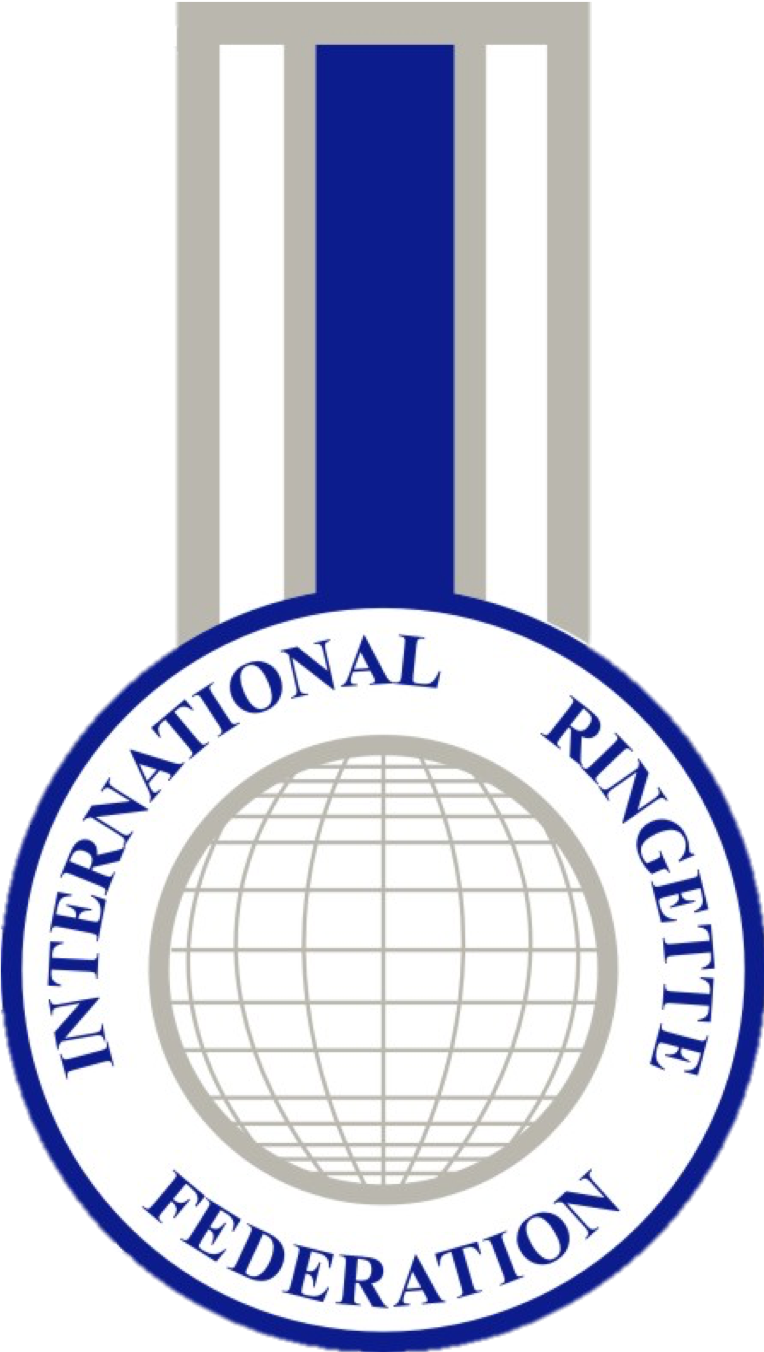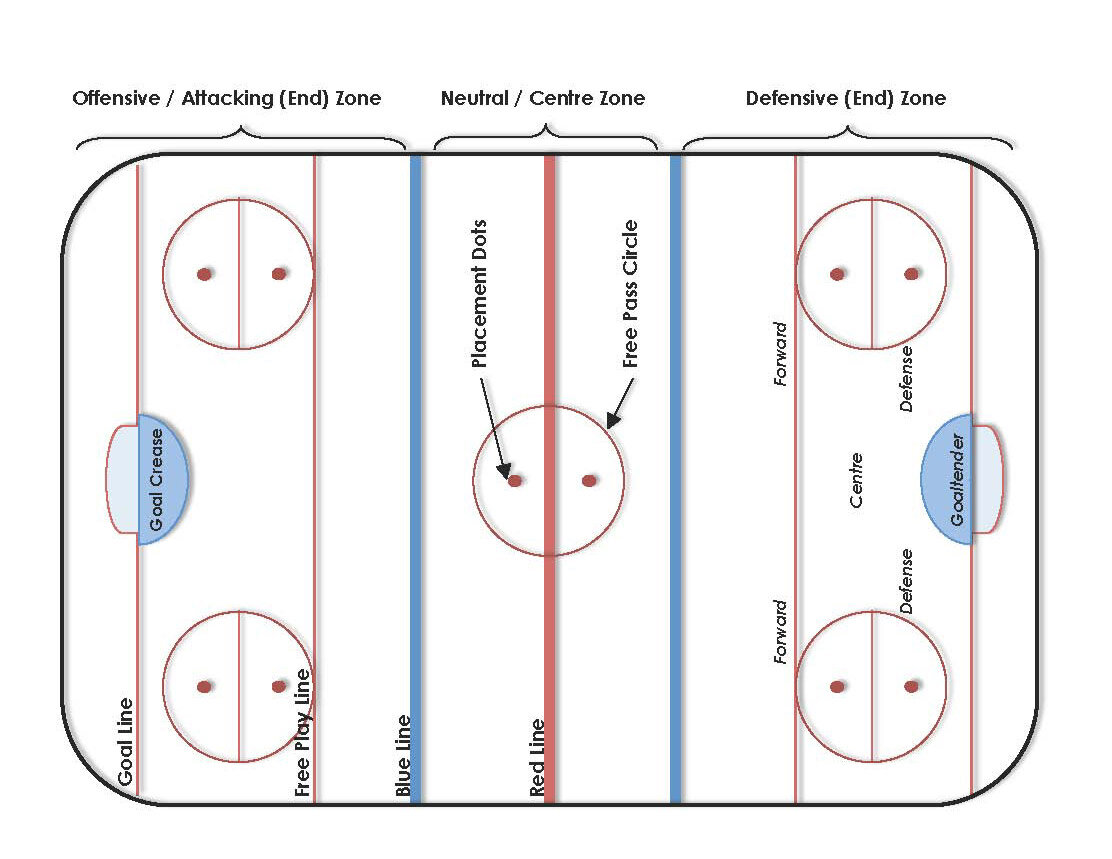
Ringette Rules
Basic Rules
Ringette is a fast paced team ice sport. It is played on a regulation ice
rink with a rubber ring and straight sticks. While play is in progress, no more than six players (five skaters and a goalkeeper) per team are
permitted on the ice at one time.
The home team has the choice of goal areas to defend for the first and third periods of the game. The teams exchange goal areas to defend for the second period.
Let the game begin!
A free pass (similar to the kick to start a
soccer/football match) is awarded to the home team in the centre ice
circle. The free pass alternates between teams to start the ensuing periods of the game.
Free passes are awarded for most stoppages in play. For a free pass, the ring is placed in the centre of the half of the free pass circle closer to the goal area defended by the team taking the free pass. The player taking the free pass is the only player permitted in the free pass circle. The player taking the free pass must put the ring into play entirely outside the free pass circle within five seconds. This player may not play the ring until it is entirely outside the free pass circle and the ring has been contacted by another player.
A defending zone free pass is replaced by a “goalkeeper ring” (kind of like a goalkeeper’s kick in soccer/football). The goalkeeper must put the ring into play entirely outside the goal crease within five seconds and may not contact the ring once it is entirely outside the goal crease until it is contacted by another player.
To ensure maximum team participation, the ring must be passed
across each blue line. The last player to contact the ring when it is
entirely on one side of a blue line may not play the ring on the other
side of that blue line until the ring is contacted by another player. Also,
the ring may not be passed to a teammate directly from one end zone
to the other end zone across both blue lines.
A maximum of three skaters from each team are permitted in the
restricted area (the area from the free play line to the end boards) in
each end zone. A team can “pull” their goalkeeper and put an extra
skater on the ice at any time during the game. During this goalkeeper substitution, a maximum of four skaters from the team making the substitution are permitted in the restricted area in each end zone.
In order to protect the goalkeeper, the goalkeeper is the only player
permitted in the goal crease. No other player may contact the ring
while it is on or inside the goal crease. When the ring is inside or on
the goal crease, the goalkeeper must put the ring into play outside the
goal crease within five seconds.
To provide even more spectator appeal and make the game faster
paced, there is a 30 second shot clock (like basketball & lacrosse).
The shot clock is started when the opening free pass is whistled to start the game. The shot clock is stopped when play is stopped. The
shot clock is reset to 30 seconds when the team with the ring takes a
shot on goal or control of the ring changes from one team to the other
team or a delayed penalty is signaled to the team that does not have
the ring.
A regulation international game consists of four quarters of equal length playing time (stop time). There is a short break at the end of the 1st & 3rd quarters; there is a longer break at half-time to clean the ice surface. Overtime periods are the same length as regulation periods. The team scoring the greater number of goals during regulation time is the winner of the game. If the score is tied at the end of regulation time, sudden-victory overtime periods shall be played. The first team to score in overtime is the winner of the game.
Many league games for younger age players consist of two halves of equal length playing time (stop time). There is a short break at half-time, the ice is only cleaned at the end of the game.
Each team is entitled to two 30-second timeouts per international length game; for many league games this is limited to 1 time-out. Teams also get one additional 30-second timeout for each regulation length overtime period.
Ringette Rules Translated
Rules in Finnish Rules in Russian Rules in French Rules in Swedish Rules in Italian


